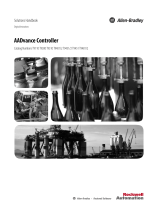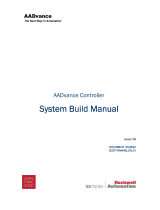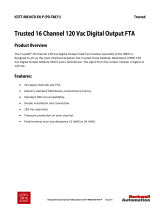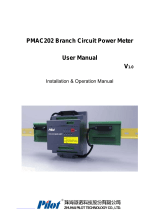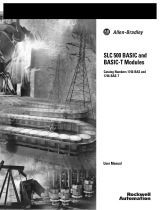
Rockwell Automation Publication 1711-UM004B-EN-P - September 2016 11
Preface
Additional Resources
These documents contain additional information concerning related products
from Rockwell Automation.
You can view or download publications at
http://www.rockwellautomation.com/literature/
. To order paper copies of
technical documentation, contact your local Allen-Bradley distributor or
Rockwell Automation sales representative.
Resource Description
Integrated Display Industrial Computers for Hazardous
Locations User Manual, publication 6181X-UM001
Contains information on how to install, configure,
operate, and troubleshoot the 6181X integrated
display industrial computers.
Integrated Display Industrial Computers User Manual,
publication 6181P-UM003
Contains information on how to install, configure,
operate, and troubleshoot the 6181P integrated
display industrial computers.
Power Supply reference manual, publication 1606-RM001
Provides installation, operation, and features
information for switched mode power supplies.
Process Safebook 1 - Safety-related control systems in the
process industry reference manual, publication
SAFEBK-RM003
Provides information, guidance, and examples to
understand and apply Functional Safety and Process
Safety standards.
AADvance Safety Manual, publication ICSTT-RM446 Defines how to apply AADvance controllers for a
Safety Instrument Function.
AADvance Troubleshooting Guide, ICSTT-RM406
Provides maintenance and troubleshooting
information for AADvance controllers.
PFH avg and PFD avg Data Reference Manual, publication
ICSTT-RM449
Provides information on AADvance controller
reliability.
HART Protocol, www.fdtgroup.org. Provides details on HART protocol.
Field Loop Configuration application note, publication
AN-T80004
Provides information for line monitoring and includes
advice for fire detectors, which are not simple
volt-free contacts.
International Electrotechnical Commission
http://www.iec.ch
Provides details on IEC 61511.
National Fire Protection Association (NFPA 72),
http://www.nfpa.org
Provides details on NFPA 72.
International Society of Automation (ISA 84.00.01),
https://www.isa.org/
Provides details on ISA 84.00.01.
National Electric Code, http://www.necconnect.org Provides details on NEC Table 310.15(B)(16).
Industrial Automation Wiring and Grounding Guidelines,
publication 1770-4.1
Provides general guidelines for installing a
Rockwell Automation industrial system.
Product Certifications website,
http://www.rockwellautomation.com/global/
certification/overview.page
Provides declarations of conformity, certificates, and
other certification details.
Product Compatibility and Download Center (PCDC)
http://www.rockwellautomation.com/global/support/
pcdc.page?.
Provides help to find product-related downloads
including firmware, release notes, associated
software, drivers, tools, and utilities.
AB PLCs




















